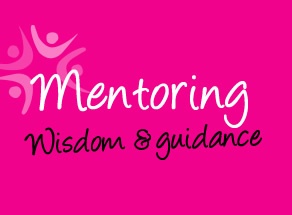
Veterinary Medicine Was Meant to Be
11/03/2021 06:00AM | 2251 viewsAs long as she can remember, Bianca Acosta wanted to take care of animals – starting before Kindergarten with her stuffed bear, Yayo, and extending to all her family’s pets growing up. And there were a lot of pets: turtles, parakeets, a cockatiel, rabbits, dogs and a cat.
Today she is an associate veterinarian with Banfield Pet Hospital, the leading provider of preventive veterinary care in the United States with more than 1,000 hospitals in neighborhoods across the country and Puerto Rico.
Her parents encouraged her dream, and helped her figure out what it takes to go from treating Yayo at age 3 to becoming a full-fledged veterinarian.
In her teens, she volunteered at an equestrian therapy center, grooming horses and helping kids with disabilities by teaching them how to interact with and take care of horses. In college, she volunteered in a zoo’s education department, teaching people about local wildlife. She also worked at an animal hospital.
Her time at the hospital confirmed for her that this was exactly what she wanted to be doing with her life.
“Working in the animal hospital helped me see that I could handle the hard things, like dealing with difficult medical cases and end-of-life care,” said Dr. Acosta. “I had wondered how I would react with the surgeries, but I became confident in my skills after going through training and education.”
After earning her bachelor’s degree in biology from Azusa Pacific University in Southern California, she applied to veterinary school. But that path is not easy, and there were times when she wondered if it would work out.
The first year she applied, she didn’t get in. But the following year she was accepted into the Doctor of Veterinary Medicine (DVM) program at St. George’s University in Grenada, West Indies. She studied there for three years, and then spent her fourth year (the “clinical year”) at the University of Tennessee in Knoxville. During her time in Tennessee she also served as an extern at the Tennessee Aquarium in Chattanooga.
After earning her degree she assumed she would go into general private practice. But she was contacted by Banfield and was drawn to the company’s focus on preventive care, and also to Banfield’s commitment to career development.
“Banfield was a great direction for me,” she said. “I didn’t want to end up in a place that would expect me to dive in before I was ready. At Banfield, they are so supportive of my growth and they helped me find my place as a veterinarian. They really set things up for success.”
Dr. Acosta joined Banfield in 2016, first as a veterinary assistant and then moved up to associate veterinarian. Her home hospital is in Corona, in Southern California, but she also helps as needed at hospitals in Upland, Fontana, San Bernardino and Eastvale.
Over the years, when working at the zoo and veterinary hospitals, she has treated or helped treat an alligator, a camel, a snake, penguins, a red-tailed hawk, a baby deer, an owl, guinea pigs, hamsters and, of course, too many dogs, cats, puppies and kittens to count.
Building Her Confidence
After a while, there was a moment when she realized: I can do this. “You’re always learning and growing. But there was a moment when I realized I was confident and comfortable and knew I could handle these cases on my own.”
Throughout school, her instructors advised her and her fellow students not to let pursuing this demanding career keep them from other aspects of life.
“By the end of school some people can be so bogged down with the medical terminology, they can forget to just be a person and remember those interpersonal skills. It’s important to have that balance.”
She’s certainly not lacking in balance. She’s a youth leader at her church, and in the past has been director of the hand bell choir and a teacher of both piano and flute.
She’s also fluent in Spanish. Her family is from Puerto Rico, and Spanish was her first language. Her parents always made sure that they read in Spanish and spoke Spanish at home. She’s thankful for that, as it’s kept her connected to her family and culture.
One of the best compliments she can receive is when her Spanish-speaking clients specifically request her to treat their pets.
“At first it might be because Spanish is their language. But when I say, ‘Yes, of course I can be your doctor!’ and then they give me this smile of relief, I realize that I’ve helped make a difference. I’ve removed that language barrier and I’ve made it easier for them to get the care they need for their pet. I realize it makes an impact, on them and on me.”
Building Connections with Clients
She said some people don’t realize how much work it can be and how taxing it can be emotionally or physically to be a veterinarian. While they love the work, it can take a lot of out of them.
“We’re here because we love this job, but it’s not always puppies and kittens. We always appreciate when clients are open and communicative about their pets – whether it’s something behaviorally we should be aware of about their pet or medically. That helps, and we always try to create the best experience possible for pets and owners.”
She said they have to work as detectives in a sense, when trying to figure out what’s going on with their pets.
“We are driven to provide the best possible care to pets and figure out those puzzles, it’s so rewarding.”
Take it from her first patient, Yayo: the rewards go both ways.






Post your Comment
Please login or sign up to comment
Comments